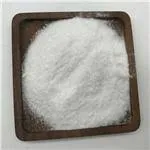Exploring Sulphamic Acid Properties, Uses, and Safety
Sulphamic acid, also known as sulfamic acid or amidosulfonic acid, is a versatile compound prominently used in various industrial and domestic applications. Its chemical formula is H₃NSO₃, and it is a white crystalline solid that is highly soluble in water. This article explores the properties, wide-ranging uses, and safety considerations associated with sulphamic acid.
Chemical Properties
Sulphamic acid is characterized by its strong acidity, yet it is less hazardous compared to other strong acids like sulfuric acid. It exhibits a pH that ranges from 1.5 to 2 when dissolved in water, indicating its strong nature as an acid. Sulphamic acid is non-volatile and thermally stable up to temperatures of around 200°C, making it suitable for various applications that require stability under heat.
Another interesting property is that it can act as both a weak base and a strong acid, making it an excellent candidate for neutralization reactions. Its ability to decompose at high temperatures allows for its use in applications involving heat, such as cleaning and descaling.
Industrial Uses
1. Cleaning Agent One of the primary uses of sulphamic acid is in cleaning agents, especially for removing limescale and mineral deposits in industrial equipment and household items like kettles and dishwashers. Its effectiveness in breaking down tough deposits makes it a favored choice among manufacturers of cleaning products.
2. pH Control Sulphamic acid is often used in industrial processes to control pH levels, particularly in water treatment facilities and swimming pools. Its ability to adjust acidity without introducing large quantities of unwanted ions makes it a preferred choice.
3. Metal Treatment In metallurgy, sulphamic acid is used for cleaning metal surfaces and as a pickling agent for removing oxides from metals before plating and coating. This helps improve adhesion and provides a smooth surface for further finishing processes.
sulphamic acid

4. Herbicides and Pesticides Sulphamic acid plays a role in synthesizing various herbicides and pesticides. Its ability to modify chemical structures allows for the creation of efficient agricultural chemicals that help in crop protection.
5. Textile Industry In textile manufacturing, sulphamic acid is utilized in the dyeing process, helping to fix dyes to fabrics and ensuring color fastness. Its properties enhance dye solubility, thus improving the overall quality of the dyed products.
Domestic Applications
In addition to its industrial applications, sulphamic acid is also found in several household cleaning products. It can be beneficial in maintaining household appliances, ensuring their efficiency and longevity by preventing mineral buildup. Many consumer products formulated for descaling appliances contain sulphamic acid as a key ingredient due to its effectiveness.
Safety Considerations
While sulphamic acid is less corrosive than other strong acids, proper safety measures should always be taken when handling this chemical. It can cause irritation to the skin, eyes, and respiratory tract, so it is advisable to use protective gear, such as gloves and goggles, when using products that contain sulphamic acid. Additionally, adequate ventilation is crucial to avoid inhaling fumes.
In case of accidental contact with skin or eyes, it is important to rinse immediately with plenty of water and seek medical attention if necessary. Moreover, it should be stored in a cool, dry place, away from incompatible substances like strong oxidizers and strong bases.
Conclusion
Sulphamic acid's unique properties and versatility make it an essential chemical in both industrial and domestic applications. From its role in cleaning agents and water treatment to its application in textiles and agriculture, sulphamic acid demonstrates its importance across various sectors. As with any chemical, handling it with care and awareness of safety protocols will ensure its benefits outweigh the potential risks. Overall, sulphamic acid continues to play a significant role in enhancing efficiency, performance, and sustainability in numerous applications.

